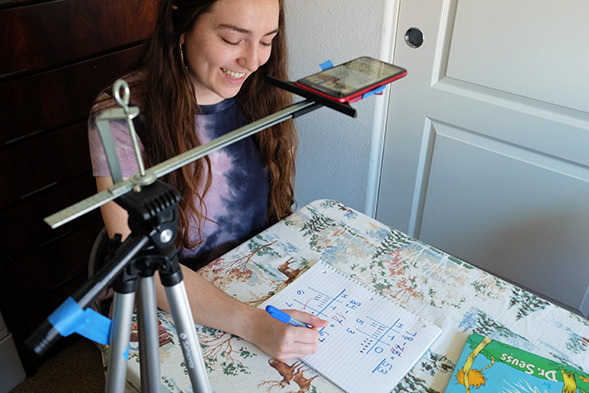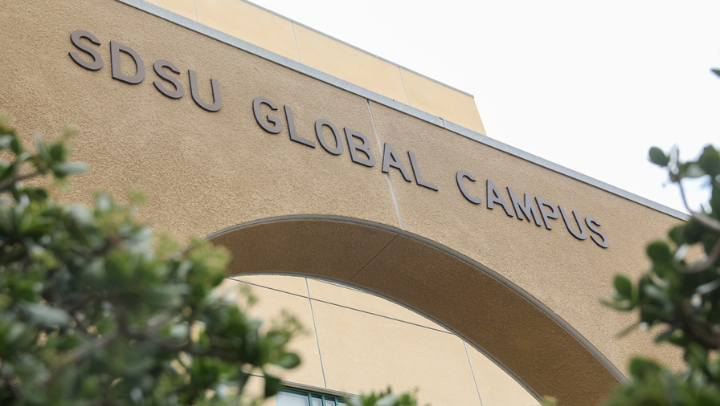Student Teachers Get Creative to Complete Credential Programs
Students in SDSUs multiple-subject teacher credential program are finding innovative ways to connect with their pupils virtually.

“I challenged them to come up with some distance learning lessons, and they just went with it.”
From a bedroom in her boyfriend’s parents’ house, Ashley Franklin teaches second grade. The student in San Diego State University’s multiple-subject teacher credential program hasn’t seen her guide teacher or students at Halecrest Elementary in Chula Vista in-person since March 13, when the district suspended in-person classes due to COVID-19. Yet from that small room, she’s found unique ways to connect with her pupils — and gain the classroom hours she needs to teach students of her own in the fall.
How unique? Take the makeshift document camera she rigged up using a tripod and ruler. The setup allows her to suspend her phone over her desk, allowing children to follow along as she works out math problems or reads aloud.
“This has really just been the biggest wrench that no one ever saw coming,” Franklin said. “But I do think a lot of the skills that we're picking up right now — especially with technology — will be very useful when we go back to the classroom. Everyone has been adjusting really well.”
Lecturer Gloria Davies, who leads SDSU’s Chula Vista multiple-subject credential cohort, is particularly proud of the way her group of 24 student teachers have handled the adversity and uncertainty. At the time schools started closing, her students had completed only about 500 of the 600 classroom hours necessary to earn a credential from the California Commission on Teacher Credentialing (CTC).
Despite talk the CTC was discussing waivers for student teachers affected by COVID, Davies reached out to her cohort and encouraged them to finish their hours by working with their guide teachers via virtual instruction. They all agreed.
“I challenged them to come up with some distance learning lessons, and they just went with it,” Davies said. “They were willing to take this adversity and make it a growth opportunity. They researched and created lessons that were impressive and innovative.”
For the students, “different” has meant filming lessons, researching and implementing online learning tools and helping children socialize through videoconferencing.
"My friends have done art lessons with guided drawings, created home workout videos — things like that,” Franklin said. “Everyone has been super resourceful. It's been amazing. Even though we're all bummed because we don’t get to see the students, all of us are trying to keep our spirits up and remember why we're here. We're keeping the passion for education alive."



